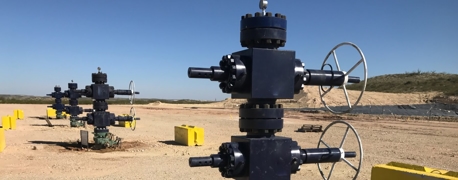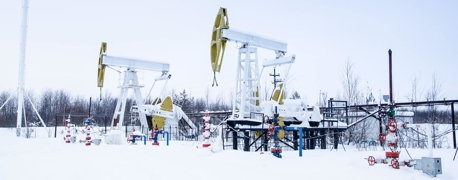Drilled but Uncompleted Wells (DUCs): What They Are & Why You Should Care

The industry calls them “drilled but uncompleted wells,” or DUCs. Natural Gas Intelligence describes them as “…a partially completed source of supply that can be brought to market more quickly and at less cost than a newly drilled well.” For property owners across the United States, however, oil and gas wells can present considerable hazards to their properties and their lives.
Extracting oil and gas from rock formations below the Earth’s surface can be broken down into two key steps: drilling the well and hydraulic fracturing (hydrofracking). DUCs are born when wells are successfully drilled, but no gas or oil is extracted because hydrofracking has not yet occurred. Oil and gas companies see these wells as valuable resources that can become productive for less effort than drilling an entirely new well.
According to the Energy Information Administration (EIA), there were 4,443 drilled but uncompleted wells in the United States as of November 2022. About one-fourth of these were in the Permian Basin; the rest were in the Anadarko, Appalachia, Bakken, Eagle Ford, Haynesville, and Niobrara regions. There have been more than 4,000 DUCs in the U.S. steadily since 2014; this number peaked in the middle of 2020 at over 8,800 as a result of the COVID-19 outbreak.
Why are there so many uncompleted wells? This number can be attributed to factors such as heavy weather, lack of funding, or a lack of qualified well-completion crews to initiate hydrofracking in areas of high demand, like the Permian Basin. In some scenarios, oil exploration companies may intentionally drill wells without initiating hydraulic fracturing efforts right away. These DUCs can then sit, unfinished, as future resources to be drawn upon based on changes in oil demand.
Why DUCs Aren’t Going Anywhere
Drilling for oil and natural gas is expensive. It costs an average of $4.9 million to $8.3 million to drill an onshore well, according to a 2016 report from the EIA. Completion costs range from $2.9 million to $5.6 million per well. The oil and gas industry can be extremely lucrative, but it is also volatile. Companies may drill wells and leave them uncompleted to conserve cash flow and save valuable resources for later, when they need them.
One could look at this approach as a company keeping its assets in the ground instead of a storage tank.
Another reason for DUCs is that it may be more expensive to cancel a rig contract. By keeping the drilling rig operational, the company can save on paying a penalty to the rig owner while preparing an asset that can produce in the future. Deferring completion and production costs can make the most sense financially.
DUCs can be seen as an overall measure of the economic health of oil and gas producers, and a sign of production potential. 2020’s record high of DUCs was a sign of struggle in the industry; 2022’s lows are proof that things have turned around.
Living Near a Drilled but Uncompleted Well: Will It Become Active?
According to the EIA, most DUC wells are completed—and begin producing oil or gas—within one year. The estimated 5% that are not completed within 2 years are likely to become “dead DUCs,” never to be finished. While the pandemic halted fracking operations, and thus the transition of DUCs to producing wells, oil and gas companies have been catching up. The number of drilled but uncompleted wells dropped to its lowest number on record in March 2022 and has remained relatively steady since.
Living near a drilling site presents its own risks; these may increase when the well becomes active.
Oil and gas wells, and the drilling and production methods used to extract hydrocarbons from them, can make life difficult for people living and working in the area. Increased truck traffic, toxic exposure from tanks containing wastewater and gas condensate, heavy machinery, loud noises, and decreased property value are just a few of the effects residents near wells have reported.
That includes a woman in Colorado who started feeling sick after gas wells near her home were drilled. She described experiencing frequent nosebleeds, lethargy, sinus infections, and even a mild stroke that her doctors could not explain. “I just wish I didn’t feel like I was 70 in a 53-year-old body,” she was quoted in an article published by Grist.
A study of Pennsylvania residents living within 1 kilometer (.62 miles) of gas wells between 2012 and 2015 uncovered a variety of reported symptoms and health problems, including sleep disruption, headache, throat irritation and cough, stress, shortness of breath, sinus problems, fatigue, nausea, and more.
In California, about two million residents live within a mile of oil and gas wells. In 2021, Stanford researchers conducted a 14-year analysis of air quality across the state, finding higher levels of pollution within 2.5 miles of wells. According to their findings, these wells have been emitting toxic particulate matter known as PM2.5 as well as carbon monoxide, ozone, nitrous oxide, and volatile organic compounds (VOCs) such as benzene. One of the researchers’ primary concerns was the fact that many of these Californians were exposed to these toxins over a period of years or even decades.
Close to 18 million Americans live within 1 mile of active oil and gas wells. Nine million live near orphaned and abandoned oil wells, two-thirds of which have not been properly plugged or decommissioned. Those who live near these wells often feel powerless to change their circumstances.
If you live near a drilled but uncompleted well, chances are that it will become active soon enough. It’s just a matter of time.


